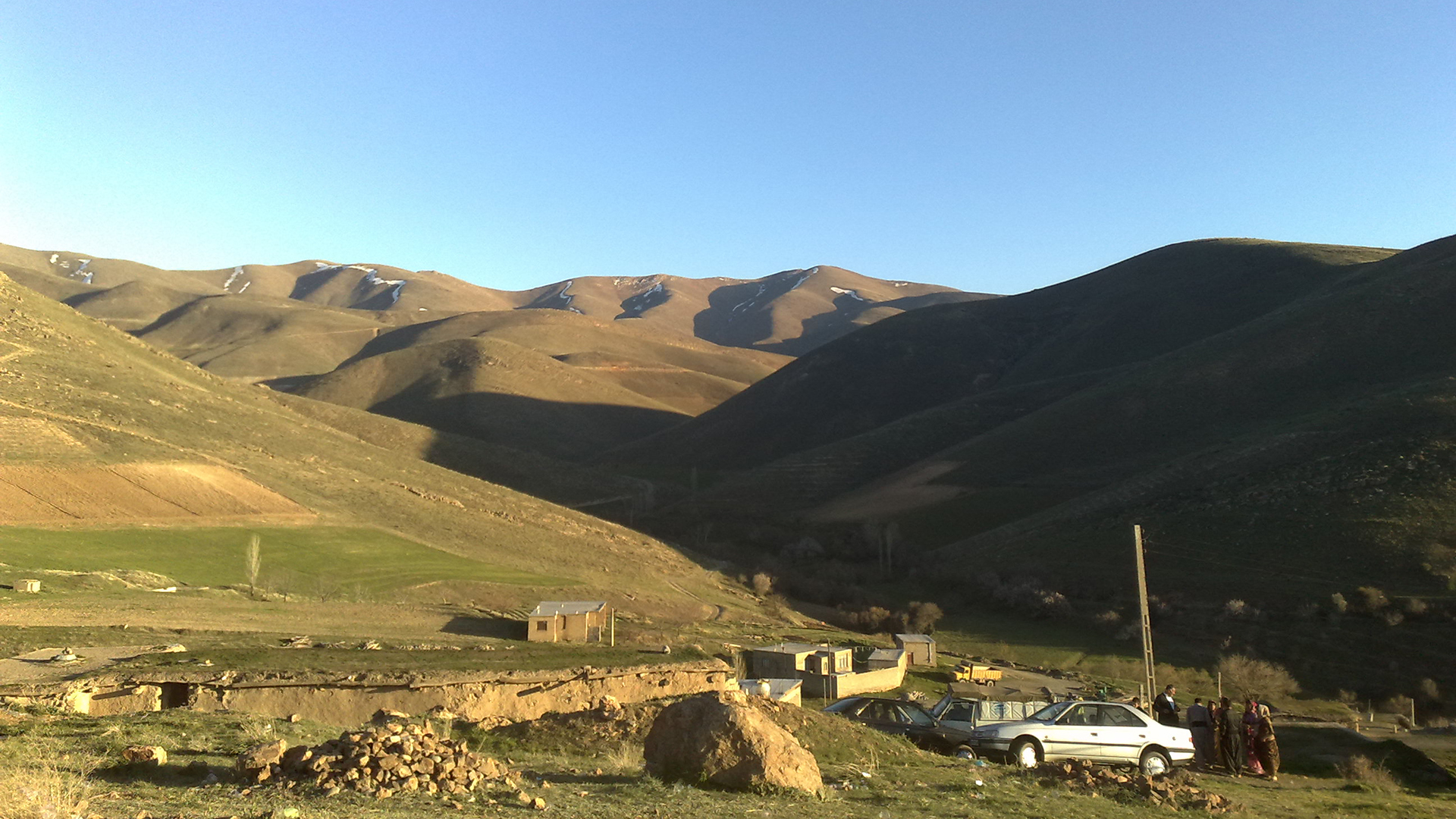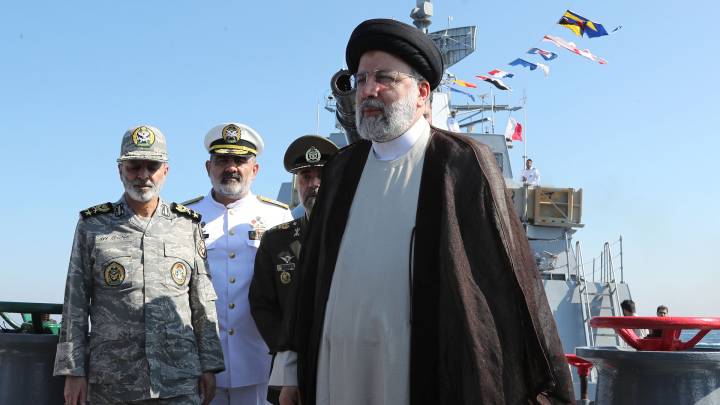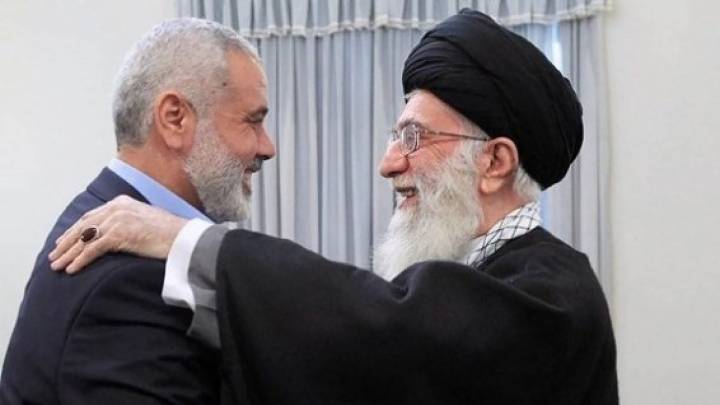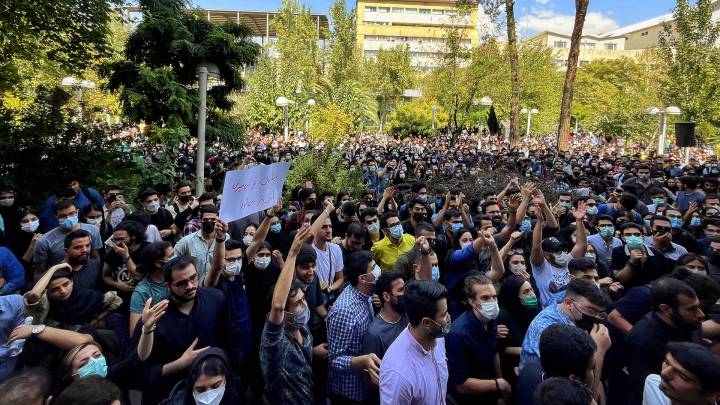Iran’s protest movement takes up many different forms. An in-depth look into what is shaping civil protest in Iran’s Kurdish regions in the west of the country.
Since mid-September 2022, new waves of demonstrations have spontaneously started in many cities in Iran, following the death of 22-year-old Sunni Kurd, Jina (Mahsa) Amini. The security agencies have been brutally clashing with demonstrators. Since then, different groups of people, including artists, students, athletes, and lawyers, among others, have been protesting in their own ways. During this movement, however, one group in particular started its own style of demonstration which has received less attention in the media, in Iran and outside, despite its importance. This was the civil protest of Sunni clerics, known as Mamusta (teacher), in Kurdish cities of Iran.
Kak Hasan Amini, a cleric well-known among the Kurds and the head Maktab-e Quran of Sanandaj, was the first to publish a statement on his social media channels on September 17, proclaiming: “My dear Mahsa, you were not the first Sunni Kurd youth to die under oppression. You know that many of your Kurdish brothers and sisters were killed for striving to gain their basic rights and natural and human needs”.
After the “bloody Friday” in Zahedan in Balochistan, when around 90 people were killed, Kak Hasan started to mobilise the Iranian Sunni Mamustas to clarify their positions pertaining to the current movement in Iran, in a similar way to Molana Abdolhamid, the Shaykh al-Islam of Zahedan and one of the key figures among Iranian Sunnis. Soon after, in an organised way, many Kurdish Sunni communities in the west of Iran started to show their solidarity and voiced their demands on, and criticism of, the establishment.
Starting in November 2022, an important written declaration from Kurdish Mamustas began to circulate on social media channels of the Iranian Sunni Kurdish communities. This declaration, signed by 315 Mamustas, condemned the Bloody Friday killings in Zahedan and the general brutality shown by the security forces.
Soon after, smaller communities of Mamustas started to make separate statements. These were conveyed in video recordings and started to be published on November 13, 2022 by Mamustas from Saqqez, the home city of Mahsa Jina Amini. Very soon, other videos came out in a similar style from other Kurdish communities.
Mamustas, students, teachers, local Bazaaris, nurses and medical doctors, published their demands in a video statement
In a similar manner, Kurdish writers also published a text, declaring their support for the protests. On November 26, teachers from Bane and Sardasht, and later on November 29 teachers from Mariwan and Sarvabad, also published a video stating their demands. More interesting was the open letter to parliament members, published on December 5, which was signed by over 200 activists from Kurdish civil society organisations. Compared to the statements from the religious Mamustas, in which Quranic verses were used as an introduction or as part of their argument, the letter from civil society groups contained fewer religious references, and started with “in the name of Woman, Life, Freedom”.
The Mamustas continued their activities, issuing statements into the beginning of 2023. Interestingly, at this time, not only Mamustas but different people from several social groups coalesced. On January 3, 100 days after the start of the protests in Iran, Mamustas and Kurdish activists published a statement condemning forced confessions and criticizing the judicial system in Iran which they described as “subordinate to the establishment and biased”. This was followed by another statement from the teachers’ community of Saqqez, condemning the arrest of school and university teachers.
The securitized situation in the early days of January, especially in the city of Javanrud, did not improve at all, leading to further confrontations between security forces and the Kurdish population of the city. In this environment, a group of men and women, including activists, Mamustas, students, teachers, local Bazaaris, nurses and medical doctors, published their demands in a video statement, drawing attention to the situation which they described as “militarized and terrifying”.
The immediate demands and requests which were elucidated in all these statements show clear similarities, despite some small differences in their formulations. In addition, it should also be noted that while all these statements have similar demands, there are few noteworthy differences. A majority of Kurdish Mamustas expressed their support for Molana Abdolhamid in their speeches, but, in all the statements mentioned here, only those from Sanandaj (November 21), Orumiyyeh (November 23), Mahabad (November 24) and Sardasht (November 26) explicitly mentioned the name of Abdolhamid and their support for him and his institution.
The idea of a referendum did not become an appealing and collectively agreed upon idea among the wider Sunni communities
Another main difference was the notion of a referendum, which was only suggested in the first statement by the Mamustas of Sanandaj. In this regard, it should also be noted that after the start of the latest protests, it was Molana Abdolhamid who raised the idea of a referendum in his Friday sermon on November 6, as a solution to defuse the crisis. Despite many reactions, the idea of a referendum did not become an appealing and collectively agreed upon idea among the wider Sunni communities, at least at this moment. Nonetheless, the Sunni communities of the Sarbaz region in the province Sistan-Balochistan did repeat the demand of organizing “an internationally observed” referendum as a possible solution.
After around four months of ongoing protest in Iran in all its different forms, the Sunni communities of Kurdish regions of Iran have played an interesting role. Over 25 statements (written or recorded on video), in which around 1,000 people participated, show two things: First, the resilience which those participants demonstrate, and second, the way in which Kurdish communities in Iran can organize and, in a decentralized manner communicate their socio-political demands. In the words of Mamusta Loqman Amini –a well-known Mamusta from Sanandaj with links to the Naqshbandiyya Sufi order (who was also arrested at the end of January): "We must be fearless ... We have not said anything wrong; we are human beings, and we are Iranians ... we want our rights. Until now, we were asleep, our attention was distracted, we were against each other, we did not agree with each other to assert our rights. Now that we have understood, I request you, my dear people, to ask for your rights with courage."
The continuation of the unrest in Iran, especially in the Kurdish regions, will certainly bring new elements to these kinds of organizing activities led by the influential Sunni clerics. To help us understand the multifaceted nature of the Kurdish communities in Iran, especially in the context of the current protests, the voices from Sunni religious communities can provide important insights which are often missing from international reports.
Although those statements did not go viral, it seems that the authorities in Iran didn’t like them at all. By the end of January 2023, it had been confirmed that at least 10 Mamustas who had participated and signed the statements and used their sermons to show their support to protestors, had been arrested by the security forces. The policy of arresting Kurdish and Balochi Sunni clerics might silence certain critical voices among the Sunnis for a while. But at the same time, this policy will increase the rise of sectarian clashes in an already volatile environment in Kurdistan as well as in Balochistan.




